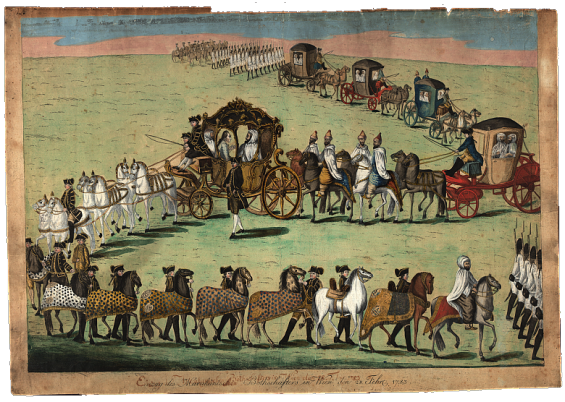During the second half of the eighteenth century, Morocco had flourishing economic and commercial relations with European countries. With Sultan Mohamed ben Abdellah in power, the country opened up to European commerce and established diplomatic ties with several countries, including the United States.
During his reign, the sultan sent one of his emissaries to Vienna, to extend his condolences to Holy Roman Emperor Joseph. In addition to its diplomatic purposes, the visit was the start of an adventure for Austrian orientalist Franz Von Dombay.
Born in Vienna, Dombay was one of the few men who sailed back to Morocco alongside the sultan’s envoy, the Pasha of Tangier Mohammed ibn 'Abd al-Malik.
The Pasha’s visit was also devoted to the signing of a treaty of peace and friendship between the two nations, as well as a trade agreement. In April 1783, a few months after the Moroccan ambassador arrived in Vienna, the treaty was concluded and Dombay was sent to Tangier as a consul and imperial translator.
Morocco's spoken dialect
But once in Morocco, Dombay became intrigued by the history and language of the country. In addition to his duties, the orientalist carried his oriental language research, with a focus on the Moroccan dialect.
According to Norman A. Stillman, associate professor of history and Arabic at the State University of New York, Dombay «continued to pursue his scholarly interest», throughout his residency in Morocco.

«While in Morocco he not only furthered his acquaintance with Arabic literature but took a keen interest in contemporary intellectual life», Stillman wrote in «A New Source for Eighteenth-Century Moroccan History in the John Rylands University Library of Manchester : The Dombay Papers».
To the historian, the Hungarian orientalist employed a Taleb, «a petty grade scholar», to help him purchase manuscripts and copy Arabic books. Dombay was very interested in Morocco and its spoken language to the point that he wrote a detailed study about the subject.
«To this day his most famous scholarly work is his Grammatical Linguae Mauro-Arabicae juxta vernaculi idiomatis usum. Accessit vocabularium Latino-Mauro-Arabicum (Vienna, 1800)», which studied vocabulary and grammar.
Morocco's history
In addition to language, Dombay was also deeply interested in the history of the Kingdom, its political map and rulers. According to Stillman, the Vienna-native had a big project while residing in Morocco.
Translating books and manuscripts about the history of the Kingdom, Dombay was planning to «write a history of Morocco from the mid-fourteenth century up to the founding of the Alawid dynasty».
Dombay died before fulfilling his plan but he left behind a big part of his works about Morocco. Stillman indicates that his works included «Geschichte der Mauritanischen Konige, a translation of al-Qirtds al-Saghir, an Arabic epitome of the Rawd al-Qirtds of Ibn Abl Zar, a chronicle covering the reigns of Moroccan rulers from Idrls I (788-91) to the Merinid Abu Sa'ld 'Uthman (1310-31), a history of the 'Alawid dynasty from 1654 to 1799, and an edition and translation of the Tuhfat al-Anb wa~Nuzhat al~Labib, an eclectic adab treatise by Abu Madyan al-Fasi (d. 1768)».
Dombay left Morocco in 1787 after he was appointed to the Austrian embassy in Madrid. He later returned to Vienna, where he died on 21 December 1810.





 chargement...
chargement...













